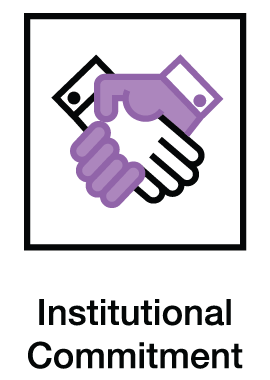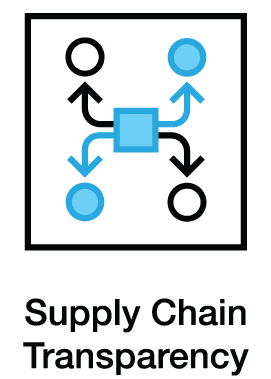Safer chemicals 101: get informed - solutions
What are the solutions?
EDF designed the Five Pillars of Leadership as a resource to help companies reduce risk, advance safer products,and build consumer trust. The pillars are informed by the best scientific research available and years of experience working with companies to scale best practices.
Institutional Commitment
As with any business initiative, successful outcomes require strong commitment and support from leaders across the organization — from the C-suite to middle management. Solid commitment from company executives and management in key business divisions is the only way to ensure that staff will be afforded the steady support and resources they need to be successful.
The most effective tool in building Institutional Commitment is a written corporate chemicals policy. A chemicals policy affirms a company’s commitment to lead on safer chemicals and articulates to all levels of the organization, as well as to suppliers, what the company wants to achieve.
- Value to business: Goals are aligned and embedded, employees are empowered, a clear market signal is sent to suppliers
Learn more:
Safer products through institutional commitments
Safer food through institutional commitments
Commitment alone doesn’t equate to industry leadership. Leadership requires action. At EDF, we have seen that establishing progressive action on the next three leadership pillars sets the foundation for industry leadership on safer chemicals.


Supply Chain Transparency
To most effectively introduce safer products, a manufacturer or retailer needs to understand how a product is created. A product manufacturer needs to have a clear picture of the chemicals used to make its products, just as a retailer needs to have transparency into the chemicals contained in the products it sells. This information provides much needed clarity into the areas of greatest risk, the scope of future work, and a means for measuring and monitoring progress.
- Value to business: Provides clarity for informed decision-making and risk mitigation
Learn more:
Safer products through supply chain transparency
Safer food through supply chain transparency
Informing Consumers
Sharing ingredient information with consumers is a key part of leadership. It shows that a company embraces the philosophy that consumers have the right to know what is in the products they buy. Additionally, ingredient transparency fosters accountability within the company to make informed decisions about the ingredients and products they buy, sell and design to meet customer demands for increased product safety and sustainability. It also provides a means for public recognition of safer chemical leadership.
- Value to business: Creates consumer trust and brand loyalty
Learn more:
Safer products through informing consumers
Safer food through informing consumers


Safer Product Design
This is where commitments turn to action on the shelf. Through new and reformulated products, a company demonstrates its commitment to phase out hazardous chemicals and bring safer chemicals into products or stores. A company sets specific, measurable objectives and establishes processes that help the company judge what chemicals should and should not be included in future products. Effective Safer Product Design also delineates the key roles for internal staff and external stakeholders, specifies resources necessary for execution and establishes a timeline for tracking progress.
- Value to business: Establishes a framework for success, accountability and higher quality products
Learn more:
Safer products through better design
Public Commitment
Effective communication of a company’s policy, timelines and progress towards goals can garner valuable support from the general public. Telling the story about one’s journey — and the pitfalls along the way — can be just as powerful as sharing success stories. Going public will reinforce internal alignment on the goals and spur the innovation of safer chemicals needed to create higher quality products. Going public can also lead to useful partnerships or engagements with other organizations, which in turn can provide companies with additional expertise, best practices, and recognition.
- Value to business: Fosters stakeholder buy-in and public respect, and opens up partnership opportunities
Learn more:
Safer products through public commitments
Safer food through public commitments
Continue with: Safer chemicals 101: get informed – strategies
